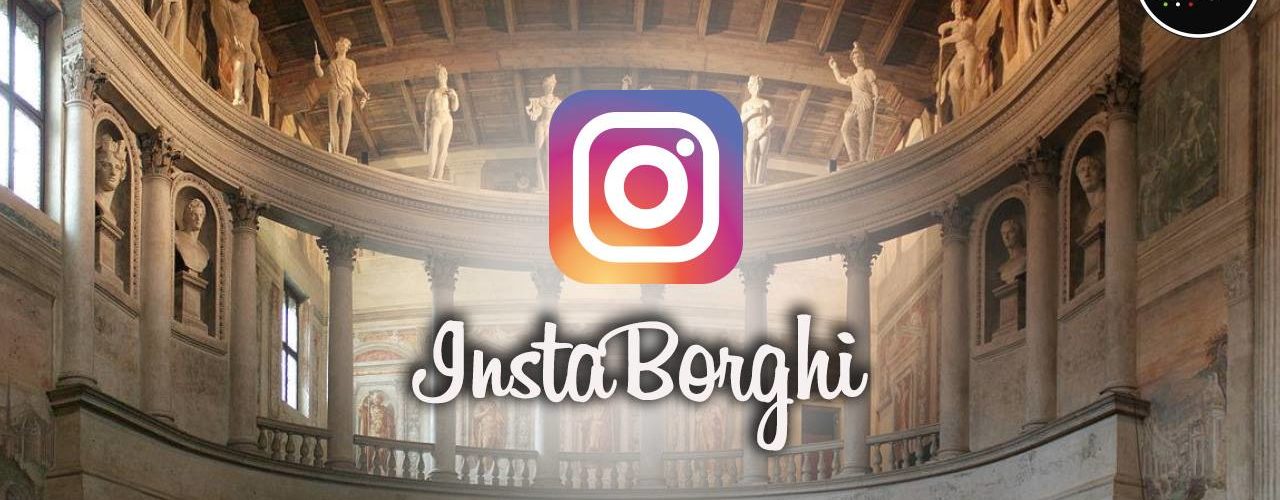Instaborghi: Sabbioneta, Italy, the ideal Lombard city
READ ME IN  Italiano
Italiano
«Last stop for Instaborghi (we’ll be back!), which migrates to the north and takes you to the discovery of Sabbioneta, Italy, a dream of Renaissance imitation of the ancient Roman cities»
In that strip of land just north of the Po, where Emilia Romagna gives way to the Lombard plain, Sabbioneta (official site) is beautiful, straight, squared, perfect, surrounded by solid walls and surrounded by the lush green of the fields. Far from the Milanese clamor, close between Cremona and Mantua, Sabbioneta is indeed a village but, first of all, it is an ideal city, one of those renaissance dreams based on the perfection of urban settlement, which in its conformation must respect certain aesthetic canons, of scientific and rational qualities, often accompanied by a strong philosophical and utopian vibe. In the 16th century Vespasiano Gonzaga, Marquis of Mantua, in spite of malaria and the marshy state of the area, decided that Sabbioneta must become a small universe of architectural perfection, based on the canons of ancient Rome, a city which he missed immensely.
After falling into decline, following the death of Vespasiano, Sabbioneta passes – in 1707 – under the Habsburg domination and in 2008, together with Mantua, is declared a World Heritage Site.
What to see in Sabbioneta, Italy
Hermetically, we could end this paragraph by saying “just see everything”. It is the village as a whole that constitutes the uniqueness of Sabbioneta, several times renamed little Athens, little Rome, an ideal city. Vespasiano, who had already designed Pamplona in Spain, dedicated all of his energies to the Mantuan village, so much so that the city lives and dies with its creator. The urban structure has the shape of a six-pointed star, the main entrance is from Porta Vittoria, from which we immediately arrive at the Church of the Incoronata, which houses the mausoleum of Vespasiano. A few steps away is Piazza Ducale, recognizable by the beautiful arcaded portico that ends at the Palazetto del Cavalleggero. To the north, the Assunta church, with its rocaille taste, houses the chapel by Antonio Galli Bibiena. On the sides of the square, the Palazzo della Ragione and the Palazzo Ducale represent what remains of public life in the small state of Sabbioneta; the latter, also reworked in a rationalist style, still retains the geometrical characteristics of typical of Gonzaga’s idealistic dream. Inside, the splendor of the Gonzaga, Colonna and Aragona families is celebrated, with portraits and bas-reliefs by the ancestors of Vespasiano, to adorn the Mannerist atmosphere embellished by Spanish jewelery. From Piazza Ducale we arrive at the Teatro all’Antica, the first example of civic theater in Europe: inside, niches and windows surround the portico of Corinthian columns, decorated with as many statues of Olympic deities. Palazzo Giardino is a triumph of Roman references and late-Renaissance decorations. Palazzo Forti and the church of the Carmine lead to the Imperial Gate, the exit of the village, from which to admire part of the walls.
What to do in Sabbioneta, Italy
Here you can bike around and from Sabbioneta an ecological corridor originates and goes through the Park Oglio south, an excellent opportunity for a ride in the plains, which takes you from the channel of Navarolo-Bogina to the river Oglio.
What to eat in Sabbioneta, Italy
Typical Mantuan cuisine, try the pumpkin tortelli and the sorbir d’agnoli, namely agnolini in meat broth and a sprinkling of Lambrusco di Sabbioneta IGT. In a few restaurants you can find pike in sauce. Typical of Sabbioneta are the filòs biscuits, a flowering of lard and mint, or chocolate pralines. Excellent is also the variant of the sbrisolona mantovana cake, made here with hazelnuts instead of almonds and durum wheat flour instead of corn.
A little curiosity about Sabbioneta, Italy
In 1970 Sabbioneta hosted the shooting of the film Strategia by Bernardo Bertolucci, and on that occasion the village assumed the name of Tara. In the eighties the Promessi Sposi were filmed here, in particular the scene of the Plague. Between Sabbioneta and Mantova the scenes of the second season of the TV series I Medici – Master of Florence, which among its protagonists also has Dustin Hoffman, were filmed
Carolina Attanasio
READ ME IN  Italiano
Italiano


